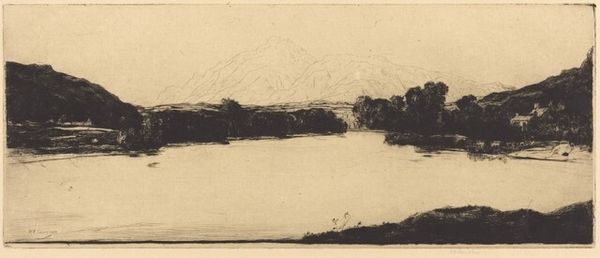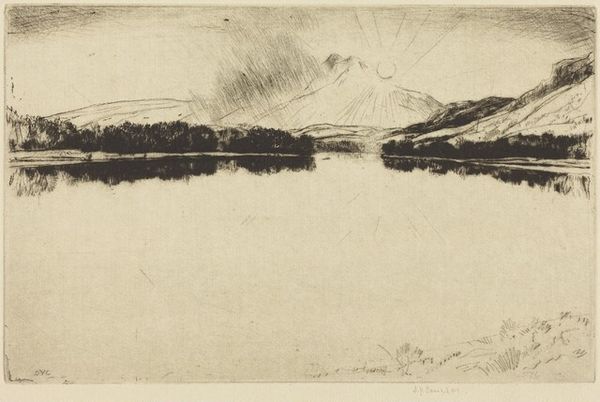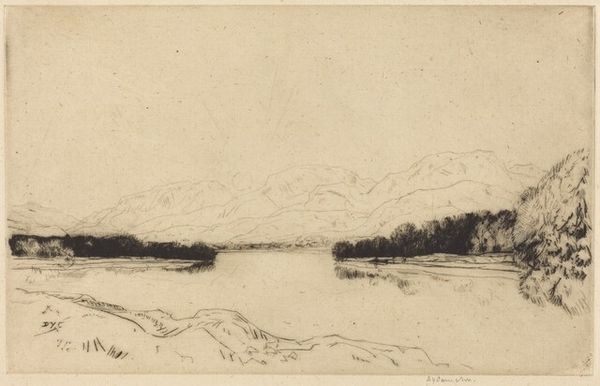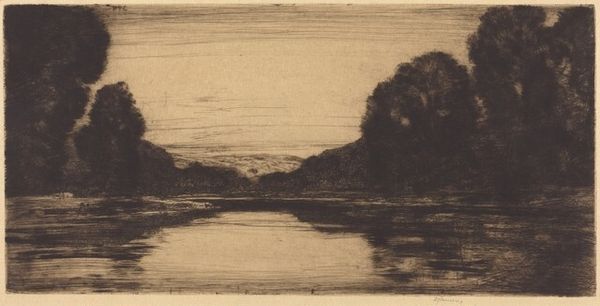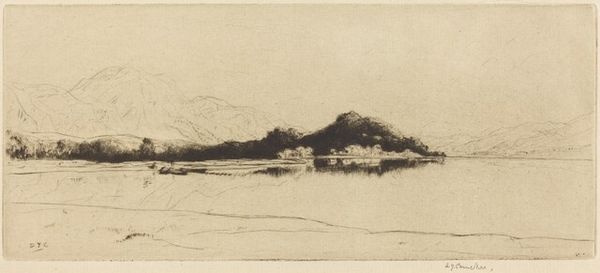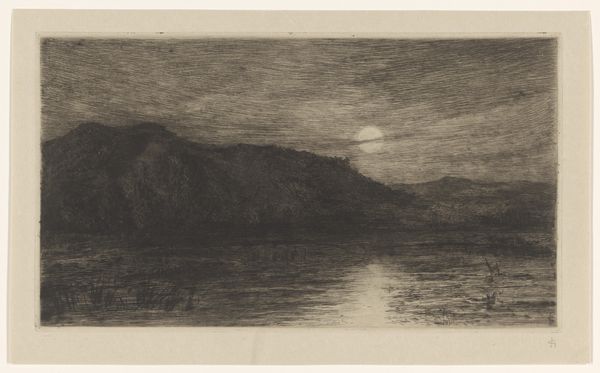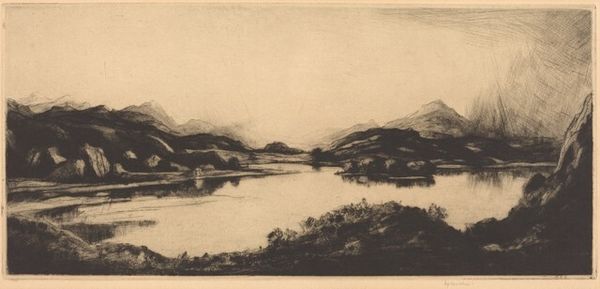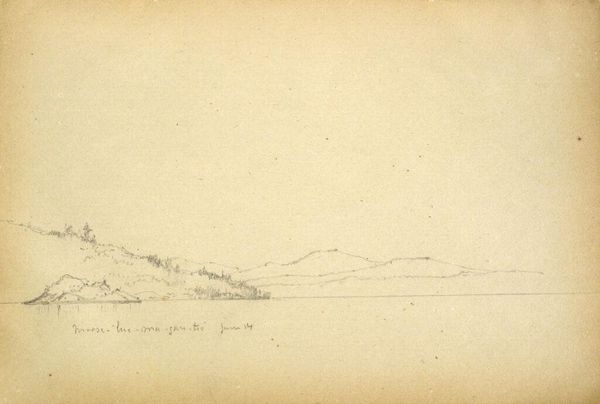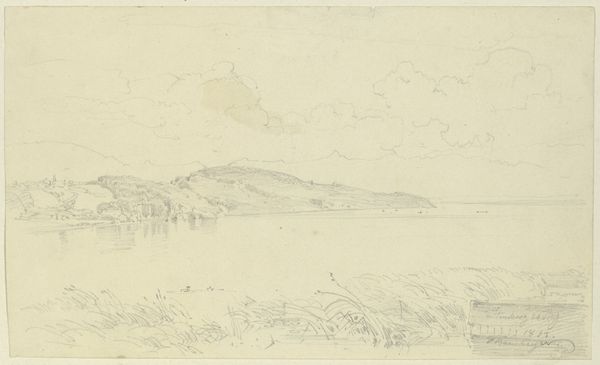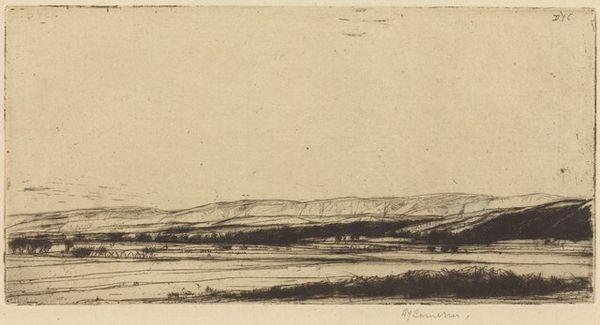
drawing, print, etching, graphite
#
pencil drawn
#
drawing
# print
#
etching
#
pencil sketch
#
landscape
#
pencil drawing
#
graphite
Copyright: National Gallery of Art: CC0 1.0
Curator: I find the stark simplicity of this landscape strangely compelling. It's a 1908 etching titled "Sketch on the Tay" by David Young Cameron. The delicate graphite lines depicting this Scottish scene convey an ethereal sense of quietude. Editor: Ethereal is a good word for it. I immediately felt a sense of tranquility. It's subtle but the mirroring of the two hills surrounding the forest invites introspection. Curator: Indeed, Cameron evokes the profound depths beneath surface appearances. The River Tay holds immense cultural significance as it bisects Scotland and symbolizes transition and time. Note how he's positioned the horizon line very high to emphasize the sky; this can be read as spiritual awareness and enlightenment breaking into the conscious landscape. Editor: Absolutely. And socially, remember that in the early 20th century, the Tay region became known for attracting artistic communities, similar to how St. Ives attracted artists later on. "Sketch on the Tay", then, isn't just about nature but also about artistic movements taking hold outside of established urban centers. It's very clever. Cameron is documenting, essentially, how the aesthetic landscape of Britain was changing. Curator: Precisely. The print form itself contributes to our reading. By using graphite lines to translate the depth of field, he gives what seems like a quickly dashed sketch, which belies the complexity of meaning it's presenting to the viewer. Even that sense of ‘unfinished’ is intriguing to consider. This aesthetic suggests a mind in active interpretation with the external world—open to possibility. Editor: He captures a particularly fleeting moment, doesn't he? Consider this work in relation to the broader artistic climate, in which the art market was beginning to transform and a sense of ‘national identity’ became more explicit within Scottish painting. Curator: Right, this evokes the question of how this relates to the popular conception of “Scottishness”. In a modernizing, industrializing world, a sense of “pristine landscape” offered solace and identification. He uses landscape as an opportunity to evoke, subtly, the symbols that undergird Scottish identity. Editor: Seeing art like this, outside of the pressures of mass-appeal aesthetics, reveals the personal dimension involved in defining public visual language. Curator: Absolutely. To think of that relationship allows me to see it freshly all over again. Editor: Me too. This piece truly resonates because it brings awareness to an overlooked moment in cultural history through nature and technique.
Comments
No comments
Be the first to comment and join the conversation on the ultimate creative platform.
